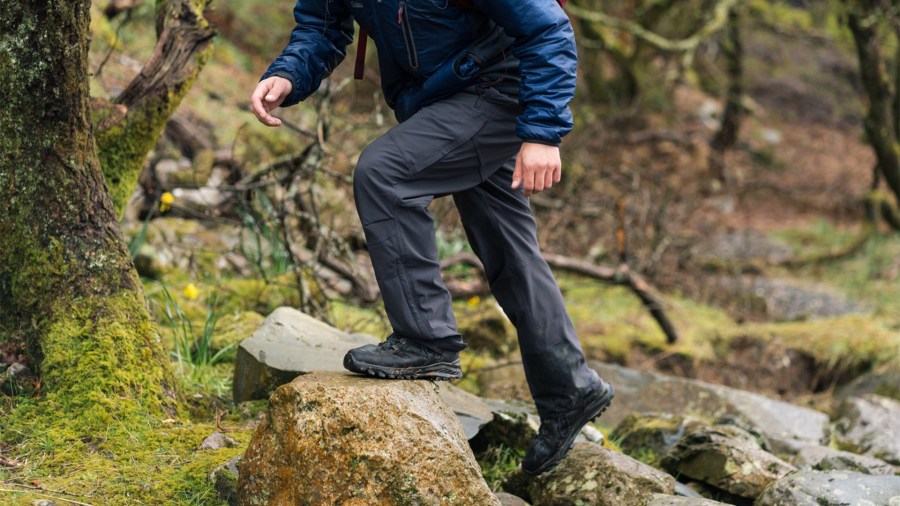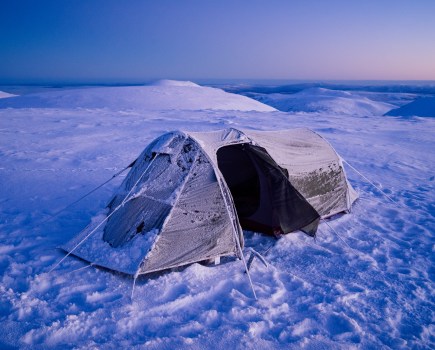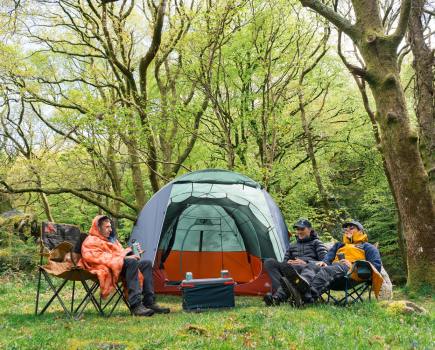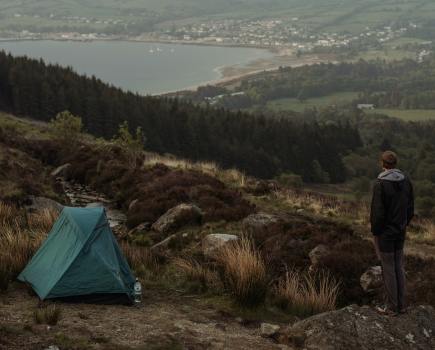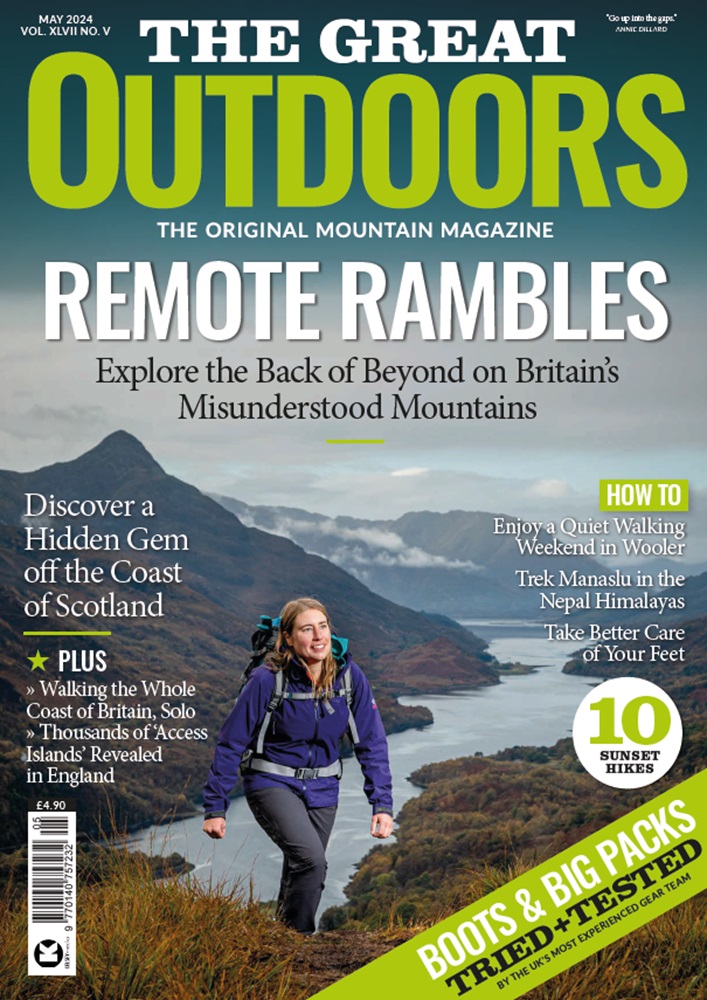The Great Outdoors team’s favorite hiking pants for this year. We’ve selected a bunch of different options to suit a variety of outdoor adventures – and budgets too.
If you wear hiking trousers designed expressly for hillwalking, your ability to enjoy a day out on the trails may be severely reduced. A good pair of hiking trousers will protect you from sharp rocks, branches and thorns, as well as regulate your body temperature and keep out wind, rain and UV rays. When the going gets tough, trousers that aren’t designed for hiking, such as jeans, joggers or plain leggings, aren’t going to cut it and may make your day much more difficult.
So what are the best hiking pants? What kind of materials do you want to be looking for and what kind of details and features are required? I’ll fill you in on all you need there down at the bottom of this article. First, however, I’ll highlight some of the options that I’ve had experience with and that have performed for me over the years.
Best hiking pants for 2024: our favourite walking trousers
This article shows Alex Roddie and Kirsty Pallas’ pick of the best hiking trousers. Alex tested his trousers on a wide range of short backpacking routes, mountaineering days out, and hikes at all levels throughout the Scottish Highlands and Lowlands. All trousers are 36” waist and short leg length.
Kirsty is between a size 8 and 10, depending on the brand’s sizing, and always a short leg if there’s an option available. The winter weight ones were tested through Scottish winter, on winter skills courses and personal mountaineering days. The other trousers were tested mountaineering, hillwalking and climbing. All weights are from Kirsty’s own scales.
Fjällräven Keb Agile Winter Trousers
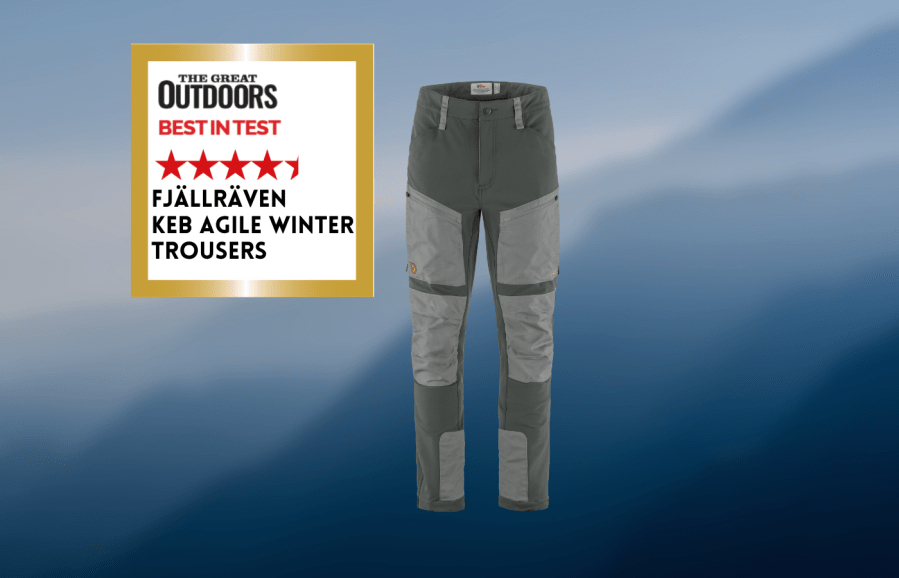
Alex Roddie’s Best in Test
For winter use, it’s hard to fault these. But they are high in price, and I’d find them too warm from spring through to early autumn.- High waist
- Warm enough for winter
- Fit over big boots
- Pockets
- No Women’s Version
- Expensive
| Quick specs | |
|---|---|
| Price: £250 Weight: 580g Materials: G-1000 Stretch: 50% polyester (recycled), 15% polyester (T400), 35% cotton (organic); 49% polyamide (recycled), 43% polyester, 8% elastane Features: ventilation zips, knee and ankle reinforcement, stretch material, boot hooks Pockets: 2x thigh pockets (zipped), 2x hand pockets (no zip) Hem: boot hook, zip expansion Sizes: waist 28–44”, leg 30–34” Womens/Mens version: men only fjallraven.com |
The Fjällräven Keb Agile are mountain hiking pants designed for winter conditions, made from G-1000 Stretch fabric. They have a good degree of stretch and a soft backing, making them warm enough for most winter conditions. The pants have a high rise and are comfortable, with freedom of movement and reinforcement at the knees and ankles. They have a zip-expansion hem, boot-lace hook, and standard belt loops for support. The pockets are large and have ventilation zips. While they are suitable for winter use, they are high in price and may be too warm from spring to early autumn. There is no women’s version of the Fjällräven Keb Agile.
Read Alex’s full Fjällräven Keb Agile Winter Trousers Review
Patagonia, Alpine Guide Pants
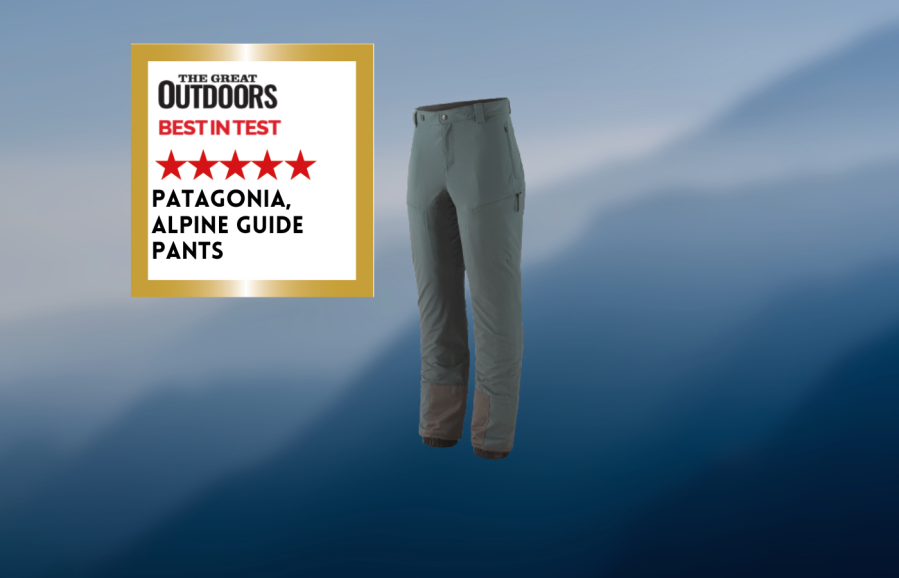
Kirsty Pallas’ Best in Test
These were easily my favourite trousers this winter, they felt great on and fit well, but also just worked great.- Fit
- Versatility
- Price
| Quick specs | |
|---|---|
| Price: £220 Weight: 495g for US size 4 Materials: 92% recycled nylon, 8% elastane Features: Internal gaiter, zipped thigh vents, stretch material, reinforced crampon patch Pockets: Two zipped hand pockets, two zipped thigh pockets Hem: Expandable zip ankle gusset, loops to add cord underneath a boot, internal gaiter Sizes: US size 2 – 16 Mens version: Yes URL: https://eu.patagonia.com/gb/en/product/womens-alpine-guide-pants/83190.html |
The Alpine Guide hiking pant is a versatile and versatile item suitable for both winter and summer activities. It features a slim fit with a good waist to hip and thigh ratio, a high waist, and a popper and fly closure. The pant can be expanded with a long zip and popper, and has reinforced crampon patches and an internal gaiter to keep snow out. The pockets are zipped and have a good size, with a streamlined thigh pocket and an inner mesh pocket. The fabric is durable and hard-wearing, with a PFC-free Durable Water Repellent finish. The pant has double-sided thigh vents for easy access to the zip, but small zip pulls are tricky with gloves. The pant has good stretch and a gusseted crotch, making it easy to move with on climbs and scrambles. Although stacked with good features, they may feel overkill in summer, but they are a great choice for classic Scottish summers.
Read Kirsty’s full Patagonia, Alpine Guide Pants Review
Tierra Lite Track Pants
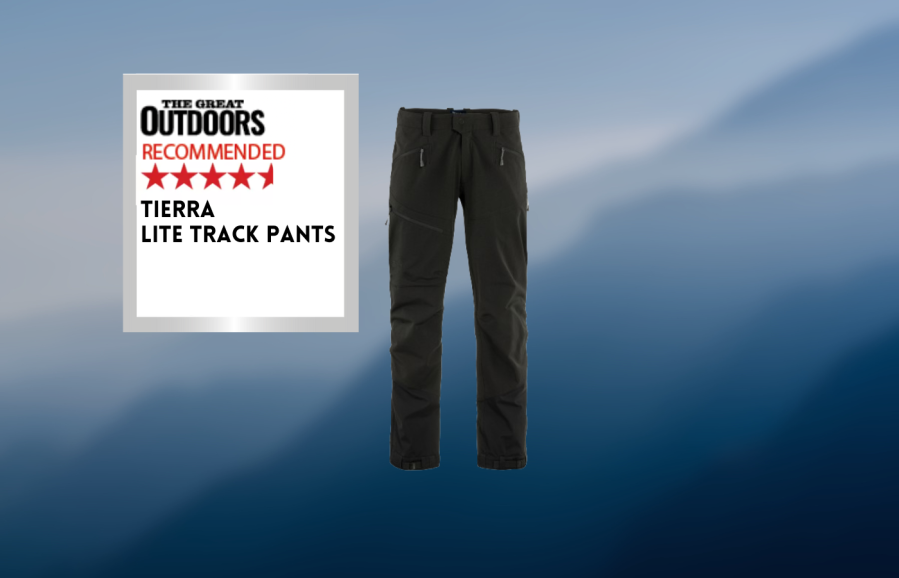
Alex Roddie Recommends
Overall, these are excellent three-season softshell trousers suited to a wide range of conditions.- Versatile
- Good fit
- Waterproof seam
- Awkward boot lacing hook attachment and hem
| Quick specs | |
|---|---|
| Price: €199.95 Weight: 568g Materials: Double Weave 4-Way Stretch Softshell, 237 g/sqm, PFC Free DWR, Bluesign® fabric, 65% recycled polyamide, 24% polyester, 11% elastane Features: ventilation zips, seat and ankle waterproof patches, stretch material, boot hooks Pockets: 1x thigh pocket (zipped), 2x hand pockets (zipped) Hem: boot hook, adjustable strap, zipped vents Sizes: men: waist 28–39”, leg 30–33”; women: 32–44 Womens/Mens version: both tierra.com |
The Tierra Lite Track Pants are versatile hiking trousers made from a lighter softshell, making them suitable for warmer months. They have a roomy fit and are breathable, with a soft backer. The pants feature fully waterproof panels on the ankles and seat, allowing you to sit on a wet bench without getting a wet bottom. They have big side vents for cooling down. The hems are overbuilt with large buckle-adjustable straps and boot-lace hooks, making them difficult to attach securely to laces. The pocket selection is good, but there is room for two thigh pockets. Support is provided via belt loops. Overall, these three-season softshell trousers are suitable for a wide range of conditions.
Read Alex’s full Tierra Lite Track Pants Review
Rab, Torque Vapour-Rise Pants
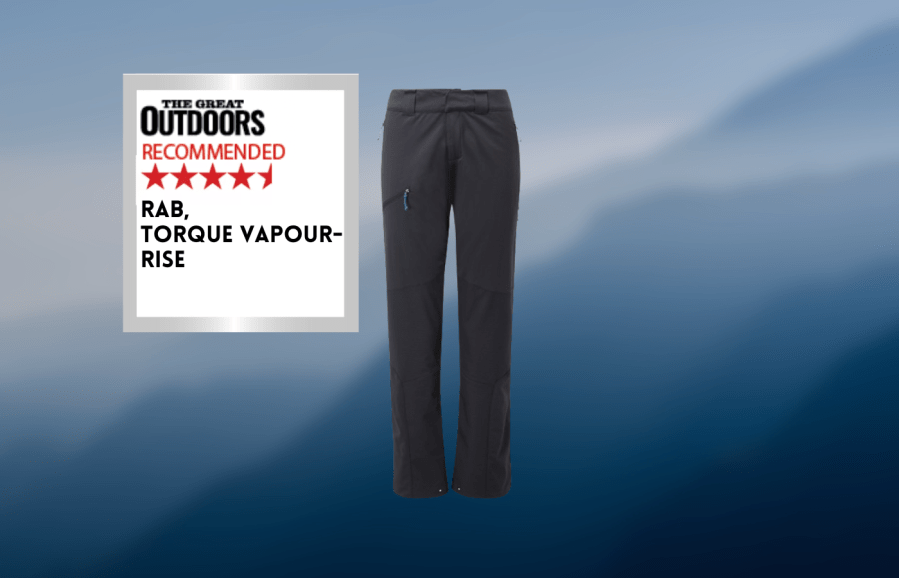
Kirsty Pallas Recommends
These are a great technical winter option, and one that I really valued on those chilly days out.- Weight for warmth
- Crampon patches
- Thin mesh pockets
- No way of tightening hem
| Quick specs | |
|---|---|
| Price: £165 Weight: 431g for UK size 10 Materials: Body 95% Polyamide, 5% Elastane; Panels 55% recycled polyester, 45% polyester; Lining 100% polyester Features: Zipped thigh vents, reinforced knee and crampon patches, stretch material Pockets: Two zipped hand pockets, one zipped rear pocket, one zipped thigh pocket Hem: Expandable zip ankle gusset, holes to add a cord underneath a boot Sizes: UK 8 – 16 Mens version: No URL: https://rab.equipment/uk/women-s-vr-summit-pants |
The Torque Vapour-Rise hiking pants are a warm, lightweight, and breathable trouser that holds its own in winter. The pants are a mid-waist fit, allowing layers to be tucked in and are slimline. The closure is poppers and a double-ended fly, and there are belt loops and brace loops. The length is slightly long, but it doesn’t affect movement when boots are on. The trouser has a zip for ski boots and reinforced patches for crampon protection. Four zipped pockets are lined with thin mesh, but the pockets are a good size. The softshell outer is windproof and has a Durable Water Repellent coating. The lining is Vapour Rise, with fluffy panels in colder areas like the bum and thighs. The zipped mesh thigh vents are small but effective for ventilating on sweaty uphills. These pants are a great technical winter option, especially for chilly days out.
Read Kirsty’s full Rab, Torque Vapour-Rise Pants Review
Keela Machu Trouser
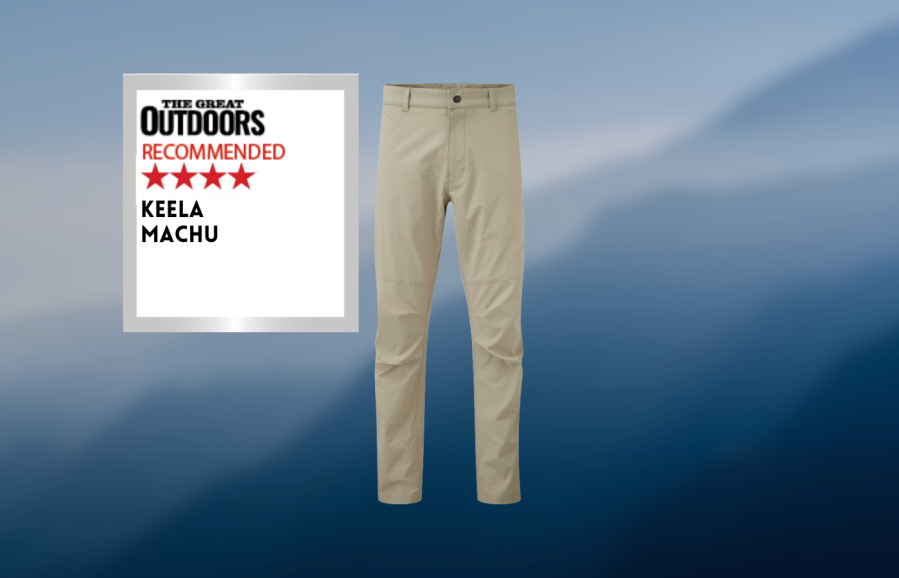
Alex Roddie Recommends
These are pretty close to my ideal for the perfect summer walking trouser. The price is good however it’s a shame about the pockets- Lightweight
- Insect protection
- Great for hot weather
- Very small pockets
| Quick specs | |
|---|---|
| Price: £74.95 Weight: 279g Materials: 96% nylon, 4% spandex Features: Insect Shield treatment, UPF protection Pockets: 1x rear pocket (zipped), 2x hand pockets (zipped) Hem: simple Sizes: men: waist 28–44”, leg 29–34”; women: 8–20, leg 29–33” Womens/Mens version: both keelaoutdoors.com |
Keela Machu summer hiking trousers are lightweight, breathable nylon with excellent stretch. They offer freedom of movement and belt loops for support. The fabric features Insect Shield technology, a permanent Permethrin treatment for insect repellence, and UPF protection. The lightweight khaki color adds comfort in warm sunshine. However, the small pockets are a downside. The trousers are similar to ordinary khaki chinos from a distance, making them suitable for those who prefer not to appear tooled-up. They are lightweight, airy, protective, and come in a light color that repels the sun and makes ticks stand out. The price is decent, but the pockets are a minor issue.
Read Alex’s full Keela Machu Trouser Review
Alpkit, Mello Tight
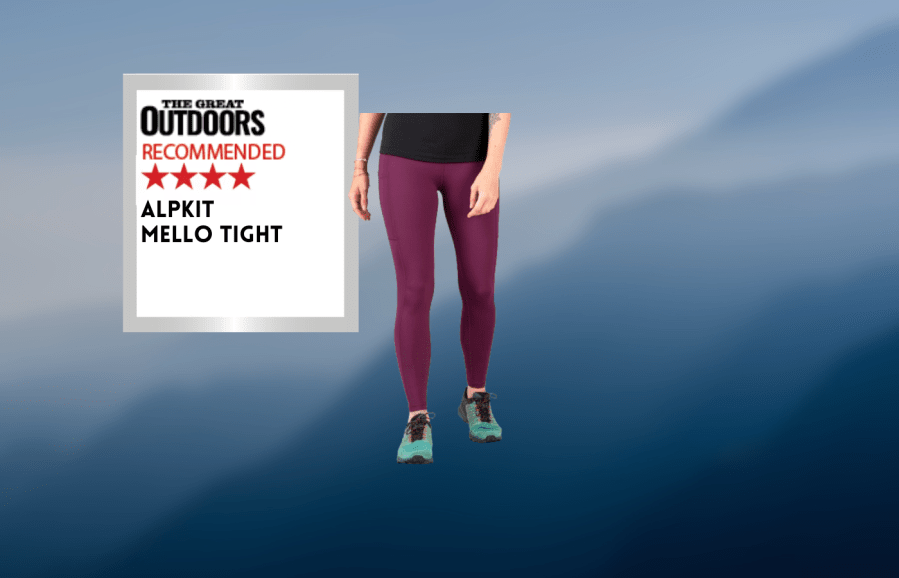
Kirsty Pallas Recommends
With warmer temperatures now, I find myself reaching for these for walking and climbing days out. They’re a durable and hard-wearing pair of leggings that have a great price tag and size range.- Price
- Weight
- Stretch
- Waistband can slip down a bit
| Quick specs | |
|---|---|
| Price: £44.99 Weight: 185g for UK size 10 Pros: Price, weight, stretch Cons: Waistband can slip down a bit Materials: 76% nylon, 24% elastane Features: High waistband, key pocket, stretch material Pockets: Thigh pocket, zipped key pocket on waistband Hem: Simple Sizes: UK 6 – 20 Mens version: No URL: https://alpkit.com/products/mello-tight-womens |
The Alpkit, Mello Tight is a popular hiking pants that is perfect for warmer days and fast movements. The stretchy, soft, and lightweight fabric fits a muscular build well, and the waistband is comfortable and high, making it ideal for under a harness or rucksack strap. The double-layered fabric on the waist ensures fit and comfort. The pants have well-placed pockets, including a thigh pocket for a phone and a zipped pocket for keys or energy bars. Although not water-resistant, the fabric drys quickly, making it suitable for fast adventures or short showers. The flatlock seams are comfortable and the fabric never becomes see-through. The Alpkit, Mello Tight is a durable and hard-wearing pair of leggings with a great price and size range, making them accessible to most people.
Read Kirsty’s full Alpkit, Mello Tight Review
Salewa, Pedroc 2 Durastretch Softshell Pant
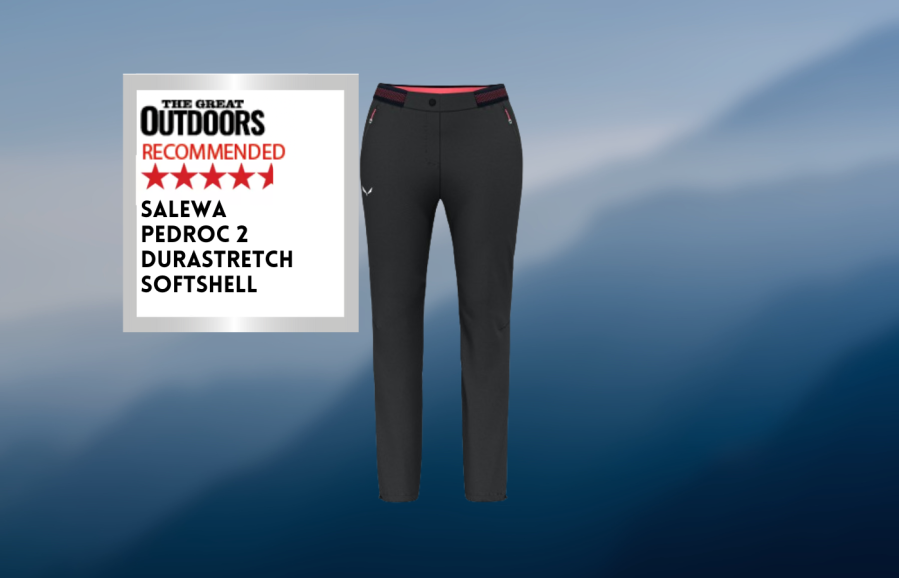
Kirsty Pallas Recommends
These are a great three season trouser option, either under waterproofs on those kinds of days, or by themselves.- Weight
- Stretchy Fabric
- Fabric seems to fur up quickly
| Quick specs | |
|---|---|
| Price: £115 Weight: 265g for UK size 8 short leg Materials: 63% polyamide, 27% polyester, 10% elastane Features: Key pocket, stretch material Pockets: Two zipped hand pockets, zipped key pocket at back Hem: Popper to adjust ankle cuff size Sizes: UK 4 – 16 Mens version: Yes URL: https://www.salewa.com/en-gb/pedroc-2-durastretch-softshell-pant-women-00-0000028705 |
The Pedroc 2 Durastretch Softshell hiking pants from Salewa are ideal for UK summers, offering light, stretchy fabric and wind and water resistance. They have a high waisted fit, allowing layers to be tucked in and keeping the legs warm. The pants have a popper, zipped fly, and tie for adjustable fit. The short leg fits well, and the zipped back pocket can fit a key or energy bar, but may be uncomfortable under a harness or rucksack. The gusseted crotch and shaped knees make them suitable for scrambling and climbing. However, the fabric may be less durable than heavier options. The pants are treated with a PFC-free Durable Water Repellent for light showers. These hiking pants are a great three-season option, suitable under waterproofs or alone.
Read Kirsty’s full Salewa, Pedroc 2 Durastretch Softshell Pant Review
Montane Men’s Terra XT Pants
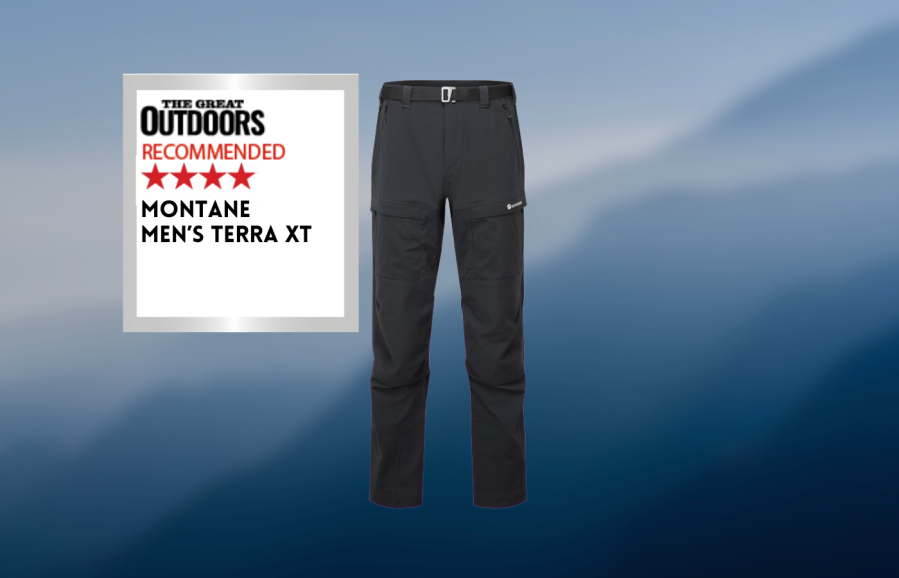
Alex Roddie’s Verdict
If they fit you, these are good trousers for winter mountaineering. But I recommend trying before you buy. And no women’s version is currently available.- Excellent pockets
- Durable materials and construction
- Baggy fit
- Heavy
- No women’s version
| Quick specs | |
|---|---|
| Price: £175 Weight: 702g Materials: 97% Nylon, 3% Elastane with PFC-free DWR; polyester backing Features: ventilation zips, knee, seat and ankle reinforcement, boot hooks, webbing belt Pockets: 1x rear pocket (zipped), 2x thigh pockets (zipped, flaps, press studs), 2x hand pockets (zipped) Hem: boot hook, popper adjustment Sizes: waist 28–40”, leg 30–34” Womens/Mens version: men only montane.com |
The Montane Terra XT are durable mountain hiking pants designed for winter mountaineering and alpinism. The fabric is thick and tough, with a heavy reinforcement on the seat, knees, and ankle. The trousers are designed for long-term use, but their high weight contributes to their baggy fit. The hems are basic but functional, with boot-lace hooks and popper adjustment. They fit over winter boots but may not fit over ski boots. Side adjustment zips are backed with mesh fabric, but ventilation is not as good as other softshell trousers. The large thigh pockets have storm flaps. Although not available in a women’s version, they are suitable for winter mountaineering.
Read Alex’s full Montane Men’s Terra XT Pants Review
Revolution Race, Hiball Trousers
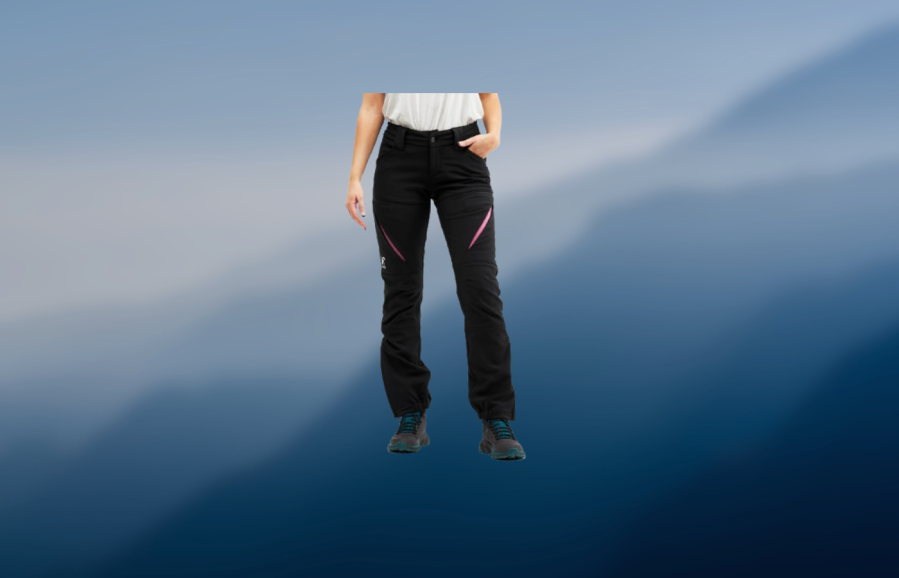
Kirsty Pallas’ verdict
The Hiball isn’t the most technical trouser, but it’s incredibly warm and durable for the price tag. If the fit works for you, then they’re a good option for the depths of winter and wild weather days- Warmth
- Durability
- Weight
- Seam placement
| Quick specs | |
|---|---|
| Price: £125 Weight: 658g for UK size 12 Materials: 89% Polyamide, 11% elastane Features: Zipped thigh vents, fleece lining, stretch material Pockets: Two hand pockets, two zipped thigh pockets, one zipped rear pocket Hem: Elasticated, expandable zip ankle gusset Sizes: UK 8 – 20 Mens version: No URL: www.revolutionrace.co.uk |
Revolution Race’s winter weight hiking pant is a popular choice for outdoor enthusiasts. The pant is high waisted, with a button and zipped fly, and belt loops for support. The fit is roomy at the waist but slightly tight around the thighs, with a stitched pink panel on the thigh. The hem is elasticated and expandable to fit various footwear, including ski boots. The pant has cozy fleece-lined hand pockets, zipped thigh pockets, a mesh secondary pocket, and a zipped back pocket. The trousers are fleece-lined throughout and have a durable softshell outer. The fabric is thick but not as stretchy as some other models. The Revolution Race Hiball is wind-proof and treated with Durable Water Repellent, making it suitable for winter and wild weather days on the hill. While not the most technical trouser, it is incredibly warm and durable for its price.
Read Kirsty’s full Revolution Race, Hiball Trousers Review
What are the best hiking pants?
When choosing hiking trousers, one of the most important things to consider is the time of year you require them for. A pair that will suit summer will, in most cases, not be suitable for winter and vice versa. With that in mind, if you’re a year-round hiker you might want to have a lightweight pair for warm, summer conditions and then a thick, insulating pair for cold winter conditions.
In this round-up, I’ve selected trousers that, from my experience, are specifically suited to three-season hiking. For outdoor adventures from spring through to autumn, you want trousers that offer the following:
The right balance between breathability, durability and water and wind resistance
Trousers made from softshell materials tend to strike a good balance in this regard. These are usually made from polyester or nylon or a blend of the two, combined with elastane for a bit of stretch. You also see a lot of outdoor trousers that are made from polycotton – that’s a blend of polyester and cotton. Many Fjällraven and Craghoppers trousers use this type of material. It tends to have good durability and wind resistance, but it has a lower resistance to moisture and a longer drying time than fully synthetic trousers. Some of these types of trousers, can be treated with wax to add extra water resistance.
Fabrics that are specifically designed for outdoor activities, such as ripstop nylon or polyester blends, tend to be more durable and resistant to tears and abrasions. The stitching and construction, including any additional reinforcements in critical areas also increase the durability of hiking trousers.
Features and details to look out for
Here are some of the smaller details that aren’t necessarily essential in all cases, but are certainly very useful to have.
Pockets
Pockets are, of course, handy to have – though some hikers will require more than others. A pocket that can store a map or GPS device and make it quick and easy to access and put away is always very useful.
Ventilation
If you tend to run quite warm you might want to consider trousers with ventilation options. This can be in the form of a simple zip on the thigh or even trousers legs that can be fully removed. While these essentially give you a pair of trousers and shorts all in one, the downside is that the zips can often be flimsy, easy to break and difficult to fix.
Panels and stitching
Areas more prone to abrasion, like the knees, seat and instep, often have thicker, reinforced fabric panels. Look for double- or even triple-stitched seams for added durability in any areas that tend to be stretched – at the crotch, for instance.
A note on fit
Fit can vary from brand to brand so it’s always a good idea to try before you buy when it comes to hiking pants.
I personally like to look for trousers that have a relaxed and flexible fit but that aren’t so baggy that they feel heavy or flappy in the wind. Flex at the knees and at the crotch is important, especially for things like climbing and scrambling. Knee darts and a gusseted crotch improve overall fit and articulation, enhancing mobility.
Some trousers will come with an in-built hipbelt while others come with belt loops. There are also some that are simply elasticated or that have poppers or velcro for adjustment.

